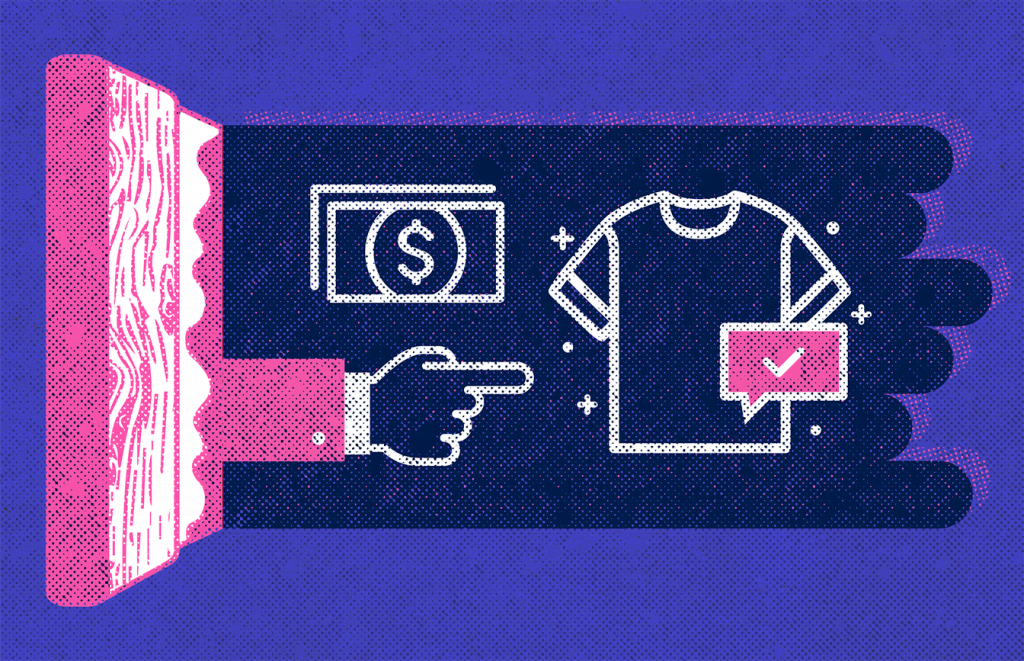Alan Martofel says Facebook ads are the “bread and butter” of Feminist Apparel’s marketing strategy.
“We don’t have the budget to be able to throw money out there without ensuring that we’re getting an even greater return,” says Alan, the company’s founder and executive director. “Efficiency is key for us.”
The small, Philadelphia-based online clothing company has been spreading feminism’s mission through their shirts and tote bags since 2013, commissioning independent artists to create designs that carry progressive messages their customers believe in.
“Our clothes are made to start conversations when people wear them to school, on campus, and in their communities,” Alan says.
They’ve always advertised their products through regular email campaigns and Facebook’s native ad manager, but Alan wanted to see if building Facebook ads in MailChimp would be easier and more profitable. He knew that he needed an effective strategy to get the kind of return he was looking for, but he wasn’t sure how to define his audience. Since his ultimate goal is to drive sales, he ran 3 different ads to find which audience, product image, and ad copy would generate the greatest return on investment (ROI).
After some trial and error, he created a $35 ad that netted $113.82 in sales—a 225% ROI—and snagged 2 first-time buyers, who he can encourage to return to the store to make another purchase or join his MailChimp list.
Here’s how Alan found a Facebook ad strategy that works for his small business.
Know who you want to target
The first ad used a budget of $50 to target Feminist Apparel’s list and generated $50.92 in total revenue, indicating that their subscribers are likely to be repeat customers. But they wanted to see if creating a new ad to reach an audience similar to their email contacts would yield a greater ROI. While this option yields positive results for most of our customers who use it, it didn’t help the second ad generate any sales.
Since many of Feminist Apparel’s subscribers are regular customers, Alan figured they could narrow down the lookalike audience even further: The third ad targeted people similar to a list segment based on purchase activity.
This segment included all customers on their list who spent more than $100 and opened any of their last 20 campaigns, and it was also refined to target women in the United States between the ages of 18 and 65.
Use your campaign reports to make informed decisions
Alan usually promotes products from the Feminist Apparel website in his email and ad campaigns, but these items didn’t drive sales for the first 2 ads. They used a carousel to display their product images and added copy to reflect the current political climate, like “Women need a place at the table where decisions about their bodies, their health care, and their lives are made” or “Heading to a protest? Let’s show people what we’re about.” These ads received a lot of engagement, but the solution for driving sales was to simplify, simplify, simplify.
Before running their third ad, they identified the 2 top-selling items from their email campaigns and used a single image to display them. The image directs traffic directly to Feminist Apparel’s homepage, rather than specific product pages, which highlights their entire collection of bestsellers.
Unlike carousel ads that will truncate an ad’s headline, the single image makes it—”Wear What You Believe In”—stand out. And this time, the ad copy was simplified to make the 10% discount code the main focus.
What we learned
- Who you target matters. When you build Facebook ads in MailChimp, you can create an audience with the list of contacts you already send to. According to our data, using your list to find and target similar people on Facebook can more than double an ad’s ROI. For Feminist Apparel, targeting similar people alone wasn’t generating sales; they needed to get more specific. So they used our list segmentation tools to target people with similar interests to their best and most-engaged customers. “It’s incredible to think of the number of people we’re able to reach with our progressive messaging on such a limited budget,” Alan says.
- Turn to campaign reports for guidance. Alan typically chooses bestselling items from the store to promote in his Facebook ads, but they didn’t generate any sales for the ones he ran in MailChimp. Feminist Apparel sends a lot of e-commerce emails, so their reports contain a lot of valuable data about what their subscribers are buying. Using your email and previous Facebook ad campaigns for guidance is a good way to figure out which of your products will perform well in an ad.
- Carousel ads aren’t always the best option. While carousel ads typically outperform single-image ads, simplicity was key for targeting Feminist Apparel’s audience. Their single-image ad that displayed the 2 top-selling products from their email campaigns generated more clicks and sales than their 2 carousel ads.
- Make your ad copy stand out. Keeping the ad copy simple and offering an incentive were also important to the ad’s performance. It’s best to write straightforward copy that doesn’t detract from the discount code or shipping information you’re providing.
Finding an ad strategy that works for your business may take some trial and error, but having a plan can help you target the right audience for your product and sell more stuff. Not sure how to get started? Our guides will help you define your Facebook and Instagram ad strategies.

